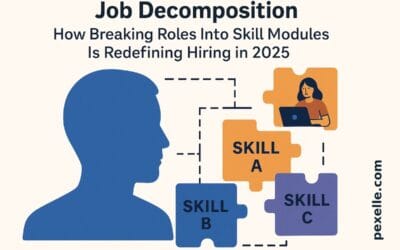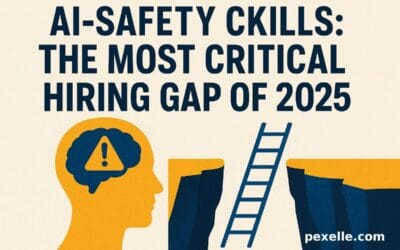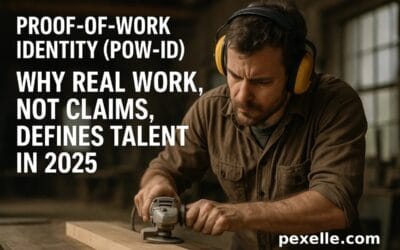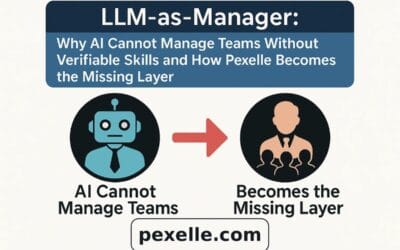Autonomous Job Matching: Why AI-Driven Job Discovery Fails Without Verified Skill Data
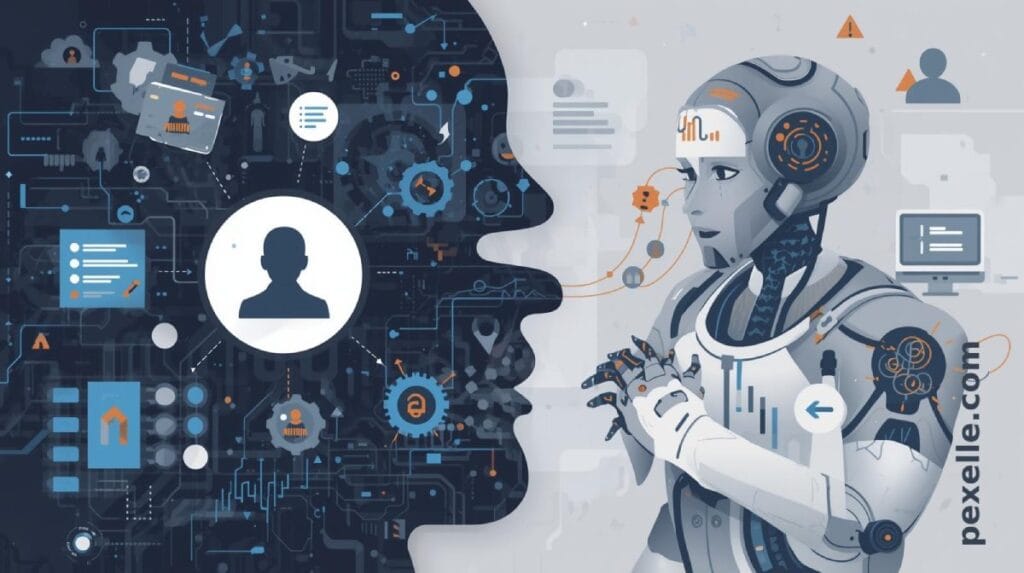
How standardizing and validating skills unlocks the next generation of self-driving hiring systems powered by platforms like Pexelle.
1. The Birth of Autonomous Job Matching in 2025
The global job market is undergoing its biggest transformation since LinkedIn launched.
In 2025, companies and platforms are experimenting with Autonomous Job Matching:
- AI agents that search for jobs for you
- AI systems that match you automatically to roles
- self-driving job pipelines that apply on your behalf
- AI recruiters that evaluate your fit instantly
- models that negotiate next steps and schedule interviews
The goal is simple:
Remove human inefficiency from job searching.
But there’s a hidden problem no one wants to talk about:
Autonomous job matching only works if AI trusts your skills and right now it doesn’t.
2. The Core Problem: AI Can’t Match Jobs Without Reliable Skill Signals
These autonomous systems depend on accurate data about:
- what you can do
- how well you can do it
- recent proof of skills
- depth of expertise
- your project history
- your performance patterns
- your skill-to-skill relationships
But most candidate profiles today are:
- outdated
- inflated
- unverifiable
- vague
- full of buzzwords
- impossible for AI to validate
Result?
Self-driving job matching becomes blind, unreliable, and often outright wrong.
AI cannot match talent without trustworthy inputs.
3. Why Current Job Platforms Fail
Most platforms still rely on:
- keyword matching
- self-reported skills
- job titles
- generic CV parsing
- incomplete profiles
- certificates without proof
This leads to:
- false matches
- low-quality recommendations
- irrelevant job suggestions
- wrong-level ranking
- frustration for both employers and candidates
Autonomous matching requires standardized, verifiable skill data not résumé noise.
4. Autonomous Matching Requires Skill Standardization
For AI to match someone correctly, it needs:
- standardized skill definitions
- micro-skill breakdowns
- skill difficulty levels
- mapped dependencies
- evidence pathways
- performance indicators
- job-to-skill linkage
In other words:
a structured, consistent talent identity.
This is exactly what Pexelle builds.
5. Pexelle as the Foundation for Autonomous Job Matching
Pexelle transforms talent profiles from “lists of claims” into AI-ready, standardized skill graphs.
Here’s how Pexelle enables autonomous matching:
✔ 1. Standardized Skill Taxonomy
Pexelle maps user skills to frameworks like:
This makes skills machine-readable and globally consistent.
✔ 2. Micro-Skill Evidence Units
Every tiny demonstration of capability becomes:
- timestamped
- validated
- structured
- connected to a project
AI finally gets granular, reliable signals.
✔ 3. Skill-to-Project Relationship Mapping
Pexelle shows:
- what skills a user applied
- in which projects
- with what depth
- with what results
AI uses this to measure true job readiness.
✔ 4. Skill Provenance & Verification
AI can trace:
- where skills came from
- how they were learned
- how they evolved
- whether they are fresh
- which tasks validated them
This eliminates fraud a massive barrier in automated matching.
✔ 5. Weighted Skill Graphs
Pexelle assigns scores to:
- skill strength
- difficulty
- recency
- reliability
- context
- performance
AI doesn’t guess anymore — it analyzes.
✔ 6. Machine-Readable Talent Identity
Every skill, project, and micro-skill event becomes structured data for AI:
- JSON skill graphs
- standardized evidence nodes
- job-fit fingerprints
- risk scoring
This is exactly what autonomous systems need to function correctly.
6. Why Autonomous Matching Fails Without Verified Skills
Without Pexelle-like systems:
- AI recommends the wrong jobs
- job seekers receive irrelevant matches
- employers get unqualified candidates
- skilled people get overlooked
- junior talent is mis-ranked
- career switchers get ignored
Autonomous matching becomes unusable without accurate, trusted skill identity.
7. What Autonomous Job Matching Looks Like With Pexelle
A fully autonomous pipeline becomes possible:
Step 1 — AI analyzes your Pexelle skill graph
✔ understanding depth
✔ identifying strengths
✔ detecting weaknesses
✔ inferring related skills
Step 2 — AI scans jobs globally
✔ matches skill patterns to job requirements
✔ recognizes capability clusters
✔ compares micro-skills to needed competencies
Step 3 — AI automatically ranks you
✔ based on proven skills
✔ not on self-reported claims
Step 4 — AI filters roles you’re truly qualified for
✔ reduces noise
✔ increases accuracy
✔ avoids mismatches
Step 5 — AI applies, negotiates or interacts on your behalf
✔ fully autonomous talent navigation
This is the future of job matching.
8. The Future: Autonomous Job Matching Becomes the Default
By 2030:
- job searching will be automated
- human recruiters will rely on AI filtering
- Pexelle-style verifiable skills will be required
- résumés will lose importance
- talent mobility will accelerate
- employers will access trusted skill data instantly
But everything depends on one foundation:
verified, standardized, machine-readable skills.
Which is exactly what Pexelle delivers.
9. Conclusion: Autonomous Hiring Needs a Brain And Pexelle Is That Brain
Autonomous job matching is the next major evolution of work.
But without verified and standardized skill data, AI cannot:
- match candidates
- rank talent
- identify readiness
- detect fraud
- understand capability
- personalize opportunities
Pexelle provides the skill identity layer that autonomous systems rely on.
AI can automate job matching but only Pexelle gives it the truth it needs to do it right.
Source : Medium.com
